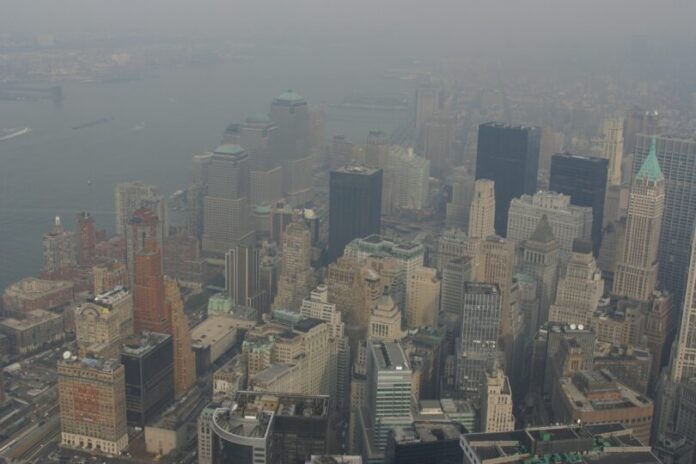
By Stacy M. Brown, NNPA Newswire Senior National Correspondent
On Tuesday, June 6, experts ranked New York as the city with the worst air pollution worldwide, as dense smoke from over a hundred wildfires raging in Quebec, Canada, drifted southward.
The persistently poor air quality caused by the Canadian fires has been a cause for concern in the Northeast and Mid-Atlantic regions for over a week.
According to IQair, New York City’s air quality index reached alarming levels, exceeding 200 at one point on Tuesday night, which falls under the “very unhealthy” category.
Consequently, the city topped the list of major metropolitan areas with the poorest air quality at 10 p.m. ET, surpassing even pollution-ridden cities like New Delhi, India.
Other cities affected by severe air pollution included Doha, Qatar; Baghdad, Iraq; and Lahore, Pakistan.
The detrimental effects of air pollution were evident when New York briefly held the undesirable distinction of having the highest levels of air pollution globally.
The pollution prompted at least ten central New York state school districts to cancel outdoor activities and events, including academic, athletic, and extracurricular pursuits.
Officials suspended recess and gym classes because of the hazardous air quality.
The smoke emanating from the wildfires contains extremely fine particulate matter known as PM2.5, which is not only minuscule but also highly dangerous, experts said.
When inhaled, those particles can penetrate the lungs and enter the bloodstream.
Sources of PM2.5 include the combustion of fossil fuels, dust storms, and wildfires.
Exposure to the pollutant has been linked to various health issues, such as asthma, heart disease, and respiratory illnesses.
Additionally, health officials said that millions worldwide lose their lives yearly due to air pollution-related health problems.
In 2016 alone, the World Health Organization reported approximately 4.2 million premature deaths associated with fine particulate matter.
The concentration of PM2.5 in New York City’s air exceeded the guidelines set by the World Health Organization by more than ten times, highlighting the severity of the situation.
William Barrett, the senior national director of clean air advocacy with the American Lung Association, emphasized the importance of staying indoors during high pollution episodes, “especially for vulnerable individuals such as children, senior citizens, pregnant women, and those with respiratory or cardiovascular diseases.”
Barrett urged people to monitor their health closely and promptly seek medical attention if any concerning symptoms arise during these events.
Reportedly, Quebec has witnessed an alarming surge in wildfires this year, with over 150 active fires, double the average.
According to the Canadian Interagency Forest Fire Center, wildfires would have ravaged nearly 9 million acres across Canada in 2023, with Quebec alone accounting for almost half a million acres.
The impact of the wildfire smoke extended beyond New York City, triggering air quality alerts across parts of the Northeast and Midwest.
Philadelphia, Detroit and Chicago experienced the westward spreading of the smoke, resulting in elevated levels of ozone and particulate matter.
The National Weather Service in Chicago cautioned active individuals, especially those with pulmonary or respiratory conditions like asthma, to limit their outdoor activities due to the unhealthy air quality.
Pittsburgh’s air quality also deteriorated to unhealthy levels, particularly for sensitive groups such as older adults, young children, and individuals with respiratory issues.
While forecasters expected moderate air quality in Chicago, Pittsburgh, and other regions over the next few days, several areas, including most of New York State, Massachusetts, Connecticut, Rhode Island, and Vermont, remained under air quality alerts.
Forecasters said they anticipate a cold front to move southward later in the week, pushing the smoke further south and eastward.
New York City Mayor Eric Adams urged residents with heart or breathing issues to limit their outdoor activities to essential tasks and expect smoky conditions to persist.
“Limit outdoor activities to the absolute necessities,” Adams declared.

